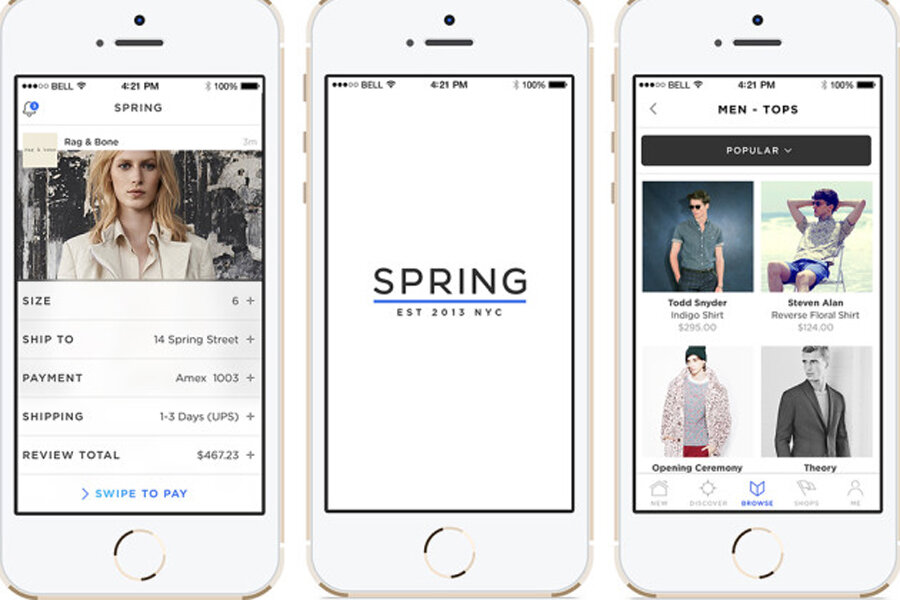New iOS shopping app lets users 'follow' brands of their choosing
Loading...
Ever tried to buy something online from your smart phone and become frustrated as your thumbs fumbled through the various options, constantly inputting your credit-card information, and eventually becoming lost in the kerfuffle that is online mobile shopping?
Well, if you're an iPhone user, there's now an app to help you with that.
Spring, a New York start-up that launched Thursday, presents consumers with an app that lets them interact with brands much the same way people interact with each other on social media. With an Instagram-like interface, users scroll through a list of more than 100 retailers that have partnered with Spring, including Levi's, Michael Kors, and Nicole Miller.
Founded by the brothers David and Alan Tisch, who have experience in e-commerce and raised $7.5 million to develop the app, Spring aims to cut out the middle layer of department stores – which cut into brands' profit margins on the products they sell – and connect shoppers directly to brands. For example, users can follow certain brands' accounts, much the way you would follow a friend or a celebrity on social media.
Moreover, consumers won't need to input their credit card information each time they make a purchase because the app stores your card information, but does not save it on its servers.
Because consumers will be able to navigate a wide array of brands as they scroll, the app can be likened more to the physical experience of shopping in a mall, walking from one brand's store to the next. Not to mention that this is only one, as opposed to several, shopping apps consumers might have on their phones.
"Customers don’t want to download individual apps for each retailer site," Mr. Tisch told The New York Times. "It’s a pain, and takes up too much room on your phone."
Nevertheless, while Spring does aggregate brand information in something of a "social" fashion, the app does not consider itself to be a social network.
"I don’t think you’re opening up a social network with intent to shop," David Tisch said in an interview with the technology site re/code. "This is not a social product. This is not a social network. This is a place to go shopping."
As re/code notes, walking the line between social media and shopping service is key for Spring, seeing as social media companies like Twitter and Facebook have recently begun implementing features to let users make purchases directly from companies' tweets or Facebook posts. In addition, Amazon recently launched its Fire smart phone, which lets users scan real-world items and then gives them the opportunity to purchase those items from the Amazon store.
In order to make money, Spring receives an undisclosed fee on each purchase, which it says is less than 8 percent, lower than that of other businesses that facilitate connections between consumers and retail, according to The Times, noting that the brands handle all shipping and customer services, not Spring.
The app eventually aims to be compatible with iPad as well as Android devices.






